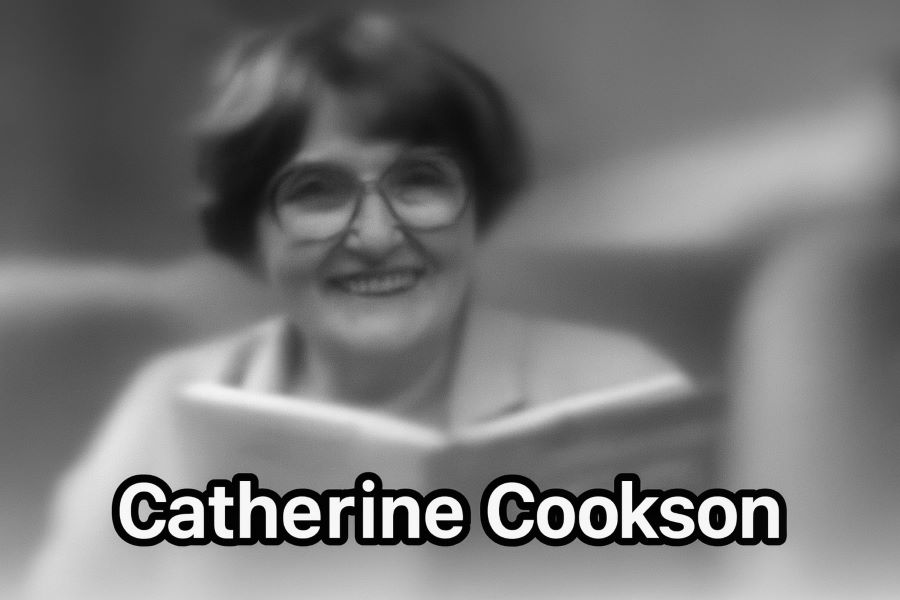Catherine Cookson: The Inspiring Journey of a British Writer Who Turned Struggles into Success
A Story of Hardship, Resilience, and Remarkable Achievement

Table of Contents
ToggleIntroduction
Catherine Cookson was a British writer whose life story continues to inspire millions around the world. Born into poverty in the industrial heart of Northern England, she transformed her early struggles into powerful works of fiction that touched readers across generations. Her novels, often centered around working-class life, reveal both the harsh realities and the indomitable spirit of human endurance. Through sheer determination, she rose from humble beginnings to become one of Britain’s most beloved and bestselling authors.
Despite facing personal hardships, Catherine Cookson’s unwavering strength and storytelling gift allowed her to carve an extraordinary legacy in English literature. Her writing was not just entertainment—it was a reflection of real lives, emotions, and dreams that continue to resonate even today.
Quick Bio
| Full Name | Catherine Ann Cookson (née McMullen) |
|---|---|
| Born | 27 June 1906, Tyne Dock, South Shields, England |
| Died | 11 June 1998, Newcastle upon Tyne, England |
| Nationality | British |
| Profession | Novelist, Philanthropist |
| Genre | Historical Fiction, Social Drama |
| Famous As | One of the most-read British writers of the 20th century |
| Spouse | Tom Cookson (m. 1940–1998) |
Catherine Cookson’s Early Life: Struggles That Shaped a Storyteller
Catherine Cookson was born into poverty in South Shields, County Durham, in 1906. Her childhood was marked by hardship, emotional pain, and social stigma. Raised by her grandparents in a working-class environment, young Catherine witnessed the struggles of everyday life in industrial England. Her mother, Kate Fawcett, was unmarried—a fact that carried deep social shame in that era—and this greatly influenced Catherine’s early sense of identity and belonging.
Leaving school at the age of fourteen, she began working as a domestic servant and later in a workhouse laundry. These early experiences exposed her to the harsh realities of poverty and class division, themes that would later become central to her novels. Every challenge she faced helped shape her understanding of resilience, empathy, and strength—qualities that define her legacy as a British writer.
Marriage and the Beginning of a New Chapter
In 1940, Catherine married Tom Cookson, a kind and supportive schoolteacher from Hastings. Their marriage marked the beginning of a new phase in her life. Despite enduring several miscarriages and long-term health issues, she found solace in writing. What began as a personal escape from pain soon evolved into a full-fledged passion and career.
Her husband encouraged her creative pursuits, standing by her through moments of illness and self-doubt. Together, they built a quiet yet fulfilling life focused on love, literature, and shared perseverance. Tom’s unwavering support became the emotional foundation behind Catherine’s success as one of the most celebrated British writers of her time.
Rise to Literary Fame
Catherine Cookson’s writing journey began later than most. She published her first novel, Kate Hannigan, in 1950 when she was in her mid-forties. The book was a success, earning praise for its vivid portrayal of working-class life and strong moral themes. It marked the beginning of an extraordinary literary career that would span over five decades.
Throughout her career, she wrote more than 100 novels and sold over 100 million copies worldwide. Her works were translated into multiple languages and adapted into television dramas that captivated audiences across the UK. What made her novels stand out was their honesty—Catherine wrote about people who struggled, dreamed, and fought for dignity. Her ability to blend emotional depth with historical accuracy made her one of the most respected British writers of the 20th century.
Writing Style and Themes
Catherine Cookson’s stories often explored themes of poverty, love, betrayal, and redemption. She had an exceptional ability to capture the voices of ordinary people and turn their struggles into compelling narratives. Her novels—such as The Fifteen Streets, The Cinder Path, and The Dwelling Place—reflect the realities of industrial Northern England, highlighting both its beauty and brutality.
She was often labeled a romance writer, but Cookson herself preferred to call her work historical fiction. Her characters were not fairy-tale figures but complex individuals shaped by difficult circumstances. Her deep empathy and understanding of human nature allowed her to create worlds that felt authentic, emotional, and timeless. For Catherine, writing was not just an art—it was a reflection of life itself.
Achievements and Recognition
Catherine Cookson’s contribution to British literature earned her national and international recognition. In 1985, she was awarded the Order of the British Empire (OBE) for her literary achievements. Later, in 1993, she was made a Dame Commander of the Order of the British Empire (DBE), one of the highest honors bestowed by the British Crown.
Beyond her writing, she became a philanthropist, donating generously to medical research, education, and the arts. Her support for the University of Newcastle and regional charities helped improve countless lives. Even after her passing, she continued to inspire through the Catherine Cookson Charitable Trust, which upholds her legacy of giving back to society.
Legacy and Influence
Catherine Cookson passed away on 11 June 1998 at the age of 91, leaving behind a legacy that still echoes through the corridors of British literature. Her husband, Tom Cookson, died just 17 days later—a poignant ending to their lifelong companionship. Despite her passing, her novels continue to be widely read and adapted for television, proving her enduring relevance.
Her life remains a symbol of perseverance and self-belief. From a poor child in South Shields to one of Britain’s most loved authors, Catherine Cookson showed that even the most difficult beginnings can lead to extraordinary destinies. Today, her name stands proudly among the greatest British writers who ever lived, a beacon of hope for anyone daring to dream against all odds.
Conclusion
Catherine Cookson’s life story is a powerful reminder that greatness often comes from struggle. Her books captured the essence of humanity—its pain, strength, and hope—with unmatched sincerity. Through her work, she gave a voice to the voiceless and dignity to the forgotten. Her storytelling bridged class divides and touched readers across generations, making her one of the most influential British writers of all time.
Her journey was filled with both light and shadow, yet it was her courage, not her circumstances, that defined her. Catherine Cookson remains an inspiration—a testament that no obstacle can silence a determined spirit.
Frequently Asked Questions (FAQ)
Who was Catherine Cookson?
Catherine Cookson was a British writer known for her novels about working-class life in Northern England. She became one of the most widely read and successful authors of the 20th century.
What is Catherine Cookson famous for?
She is best known for her realistic novels set in industrial England, such as The Fifteen Streets, The Cinder Path, and The Dwelling Place, which explore social struggle and human resilience.
How many books did Catherine Cookson write?
Catherine Cookson wrote over 100 novels, many of which were adapted for television and translated worldwide.
What inspired Catherine Cookson’s writing?
Her difficult childhood and experiences of poverty inspired her to write stories about courage, endurance, and hope among ordinary people.
What is Catherine Cookson’s legacy?
Her legacy lives on through her timeless novels, television adaptations, and the Catherine Cookson Charitable Trust, which continues her work in supporting education and the arts.



